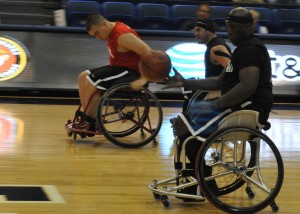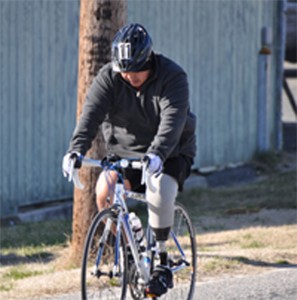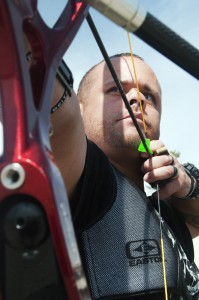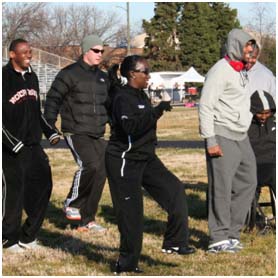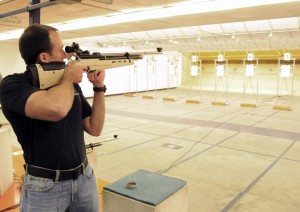By Emily Anderson, WTC Stratcom

U.S. Army SSG Charles Baird, currently assigned to the Fort Belvoir Warrior Transition Unit, takes aim during the Army archery and sitting volleyball assessment and selection clinic for the 2013 Warrior Games.
The U.S. Army Warrior Transition Command Warrior Games assessment and selection clinics are currently being held throughout the United States to find the best athletes to represent the Army during the annual Warrior Games.
“The clinics are really good because it gives me a chance to get active and be a part of a team again,” said SGT Jeremy Bowser, currently assigned to B Company, Fort Drum Warrior Transition Unit. “I feel I’m getting involved and not just sitting around doing nothing. “
The first multi-sport clinic was held in Fort Belvoir, Virginia, the last week of October and the second multi-sport clinic will take place November 4 – 9, 2012, at Fort Bliss, Texas. The Fort Belvoir clinic included specialized training in archery and sitting volleyball, and the Fort Bliss clinic will include cycling and swimming activities.
“Providing opportunities to compete and rebuild confidence in their abilities is the primary reason we’re holding these clinics, but we also want Soldiers and Veterans to try the different reconditioning activities.” said LTC Keith Williams, Adaptive Reconditioning Branch Chief, Warrior Transition Command. “This is the athletes chance to see if there’s another sport they would really enjoy doing.”
“Bringing awareness to the different types of activities available is the one of the reasons we host clinics and camps on military bases or highly populated military areas,” Williams added. “Our primary camps and clinics focus on holistically reconditioning our Soldiers in each of the six Comprehensive Transition Plan domains.”
Since 2010, nearly 200 wounded, ill, and injured servicemembers and Veterans competed annually at Warrior Games, a unique partnership between the Department of Defense and U.S. Olympic Committee Paralympic Military Program. Warrior Games’ athletes compete in sitting volleyball, wheelchair basketball, swimming, cycling, track and field, archery, and competitive shooting. Gold, silver and bronze medals are awarded to the athletes or team members who place first, second, or third in their events respectively.
“It’ll be exciting if I make the team because I’ve never done a competition like this before,” said SSG Charles Baird, currently assigned to A Company, Fort Belvoir Warrior Transition Unit. “This is a new experience, and it will be a great honor to take part in something like this which not everyone is able to do.”
Although Baird is competing for a position on the Army’s archery team, he decided to look into the other Warrior Games sports for a chance to secure a spot on the team.
“Participating in these clinics is very therapeutic and helps take my mind off of other things.” Baird said. “I’ve played wheelchair basketball before, but I will have to learn how to swim because if I don’t make the team this year I’ll have an extra advantage for next year’s team.”
Last year the Army dominated in several events, winning more than sixty medals, and 2013 Warrior Games looks to be no different.
“After watching the competitors during the clinic and the feedback I’m getting from the field, I have no doubt the Army’s team will be a reckoning force during the 2013 Warrior Games,” Williams said.

